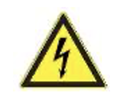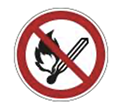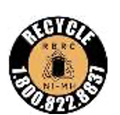Caring for and disposing of car
batteries.
End users can make a significant impact on waste reduction by embracing best practices and exploring opportunities for battery reuse and
recycling. These efforts not only extend battery life but also reduce the demand for new batteries.
Types of car batteries
There are several types of batteries in vehicles
Traction Battery
Battery that is specifically designed to provide electric power for traction in hybrid or electric vehicles, that weighs more than 25 kg.

Portable Battery
Battery that is sealed, weighs 5 kg or less, is not designed specifically for industrial use and is neither an electric vehicle battery, nor an SLI battery (E.g. Key battery).

SLI Battery
Starter, Light and Ignition Battery that is specifically designed to supply electric power for starting, lighting, or ignition and that can also be used for auxiliary or backup purposes in vehicles (E.g. 12-volt battery).
Maximising the lifespan of your batteries
To maximise the lifespan of vehicle batteries and promote sustainability, it is important to follow practices that extend their use and enable reuse, repurposing, and remanufacturing.
Traction Battery
- First, charge the battery before it is fully discharged and avoid overcharging.
- Always use the manufacturer-recommended charger for your battery type and ensure the charging equipment is compatible with your battery to prevent damage to it.
- Temperature management is also critical. Keep the battery within the manufacturer-recommended temperature range.
- Additionally, store the vehicle in a cool, dry place when not in use. If you are storing the vehicle away for an extended amount of time, check the charge level periodically to ensure it doesn't drop too low.
- Regular use of the vehicle ensures the battery remains in optimal condition.
- Finally, when the battery's performance significantly declines, it’s time to repair it or replace it.
- Always dispose of old batteries responsibly – see section below on Proper disposal and recycling of waste batteries.
Portable Battery
- Avoiding extreme temperatures, preventing exposure to moisture and storing the battery in cool, dry conditions will help maintain its performance.
- Handle portable batteries carefully to avoid damaging the casing or connectors. Do not drop or subject the battery to heavy impacts, as physical damage can lead to battery failure or even pose a safety risk, especially in lithium-ion batteries.
- Batteries degrade over time and will eventually need to be replaced.
- If your portable battery isn’t holding a charge well or fails to meet your device's power needs, it’s time to replace it.
- Always dispose of old batteries responsibly by recycling them at designated collection points.


SLI Battery
- First, maintain proper charge levels. Regularly check that the battery is properly charged, especially during long periods of vehicle inactivity.
- Ensure the battery is fully charged during the winter months, as cold temperatures can reduce its ability to start the engine.
- Avoid letting the battery discharge completely, as keeping it discharged can damage it. Keep the battery away from extreme heat, as these conditions can significantly affect its performance and lifespan.
- Regularly inspect the battery for any signs of corrosion, especially around the terminals. Tighten and secure the battery terminals regularly to avoid loose connections, which can lead to voltage drops and poor performance.
- Corroded or loose connections can also cause starting issues or prevent proper charging. If you notice any physical damage, replace the battery immediately.
- Even when not in use, periodically charge the battery to maintain its health while regularly checking and maintaining the electrolyte levels. If the battery shows signs of reduced capacity (such as difficulty starting the engine or dimmed lights), it may be time for a replacement.
- Further instructions for traction and SLI batteries can be found in the corresponding owner’s manual of your vehicle.
Proper disposal and recycling of waste batteries

The correct disposal and recycling of waste batteries is vital for safeguarding the environment and human health. Improper disposal of batteries can lead to leakage of harmful chemicals which may cause ecosystem damage if they enter soil or water.
Rechargeable and non-rechargeable batteries contain hazardous substances, including heavy metals and chemicals, which pose a risk of environmental contamination if disposed of with general waste. As such, they must be separated and collected for recycling.
Battery recycling plays a crucial role in recovering valuable materials such as lithium, cobalt, and nickel, thus reducing the need for mining raw materials.
We provide a free take-back service at designated locations for waste batteries, allowing consumers to return them for proper disposal and recycling. End users are encouraged to utilise these facilities to ensure responsible disposal and support the recovery of valuable materials from batteries.
The type of battery determines the type of process involved:

Traction Battery
Nissan electric vehicles contain industrial Lithium batteries. If requested by an end user (as defined in The Waste Batteries and Accumulators Regulations 2009), Nissan Motor (GB) will arrange to take back these batteries free of charge.
If you have an end-of-life electric vehicle battery and would like to request it to be taken back, please contact our recycling partners at CarTakeBack.

Portable Battery
You can drop off portable batteries at public collection points or at a respective dealer where the vehicle was purchased.

SLI Battery
You can return your Lead-acid starter battery to any Nissan dealer, or you can recycle it at one of the following:
- Civic amenity and recycling centres
- Local authority battery collection schemes
- Licensed End of Life vehicle authorised treatment facilities
- Licensed metal recycling sites
Get your battery replaced by professionals
Find a service centre closest to you for all of your battery needs.

Impact of Batteries on Human Health and the Environment

Health Risks:
- Damaged batteries release harmful chemicals that can cause skin irritation, burns, and respiratory problems.
- Overheating or mishandling batteries can lead to thermal runaway, releasing toxic fumes that are harmful to health.
- Increased risk of fire from the leakage of flammable electrolytes.
Environmental Impact:
- Improper disposal can leak hazardous chemicals into the environment, polluting soil and water, and harming wildlife.
- End user is responsible for proper disposal to avoid environmental pollution and reduce negative impact of chemical substances.

Protective Measures and Safety Guidelines
By following protective measures and safety manufacturer's recommendations, end users can ensure the safe use and handling of batteries, reducing the risk of accidents and ensuring longer battery life.
Always use the manufacturer-approved charger
Using an incorrect charger can cause overcharging, undercharging or damage to the battery.
Avoid tools and hands contact with battery terminals
To prevent short circuits, electric shocks or other hazardous situations, always wear appropriate personal protective equipment.
Avoid exposing the battery to extreme temperatures and moisture
High heat, cold, and moisture can damage the battery and increase the risk of hazards. Ensure the battery is stored in a safe and dry place.
Never open or attempt to repair the battery yourself
Never open or attempt to repair the battery yourself, unauthorised repairs could lead to injury, further damage or dangerous safety hazards.
Regularly inspect the battery for signs of damage
If it’s possible, look out for potential issues such as wear, leaks, corrosion or cracks to ensure that the battery is functioning properly. Replace any batteries that shows signs of malfunction.
If you notice smoke, heat, strange odors or unusual sounds
Leave the premises immediately and call the fire brigade.
If you notice that the battery in your vehicle malfunctions
Stop the vehicle in a safe location, turn off and exit the vehicle. Then contact roadside assistance or emergency services, keeping your distance from the battery.
Keep batteries away from children
Ensuring they are stored in a secure location where they cannot access or tamper with the batteries, preventing potential hazards.
Only qualified professionals should handle large lithium batteries
Safe handling requires specific expertise and adherence to the manufacturer’s safety instructions.
Dispose of damaged or defective batteries immediately
And properly to ensure safe and environmentally responsible handling.
Be cautious when handling damaged batteries
And wear appropriate personal protective equipment.
Read instructions carefully
Before handling.
Emergency Procedures
Battery-related emergencies can pose significant risks, requiring prompt and careful action to protect health and safety. Site specific risk assessments should be in place before handling batteries. End users are responsible for following safety measures, properly maintaining batteries, and taking immediate action in the event of an emergency.

In case of a lithium battery spill
- Evacuate the area if needed to avoid exposure to hazardous materials and seek expert advice.
- If suitably trained staff are available, wear suitable PPE (for example chemical resistant gauntlets, goggles, visor, chemical resistant overalls) and use absorbent materials or a spill kit to contain the liquid.
- Ensure risk assessment is in place.
- Dispose of any materials without compromising environmental safety and in line with local regulatory requirements.
In case of thermal runaway, smoke, heat, or dangerous battery conditions
- Leave the vehicle or evacuate the area, move people to safety and avoid inhaling smoke or fumes.
- Call the fire brigade and report the thermal runaway. Advise first responders that it is an electric vehicle or battery.
- Use fire extinguishers to protect escape routes while you evacuate if needed.


In case of an accident / First Aid procedures
- If battery fluid or acid comes into contact with your eyes, rinse them immediately with water for at least 15 minutes. Seek medical attention right away.
- If the battery substance comes into contact with your skin, wash the affected area thoroughly with a large amount of water and soap, consider using C-gel or similar. Seek medical attention right away.



























